Are 32mm Binoculars all you Need?
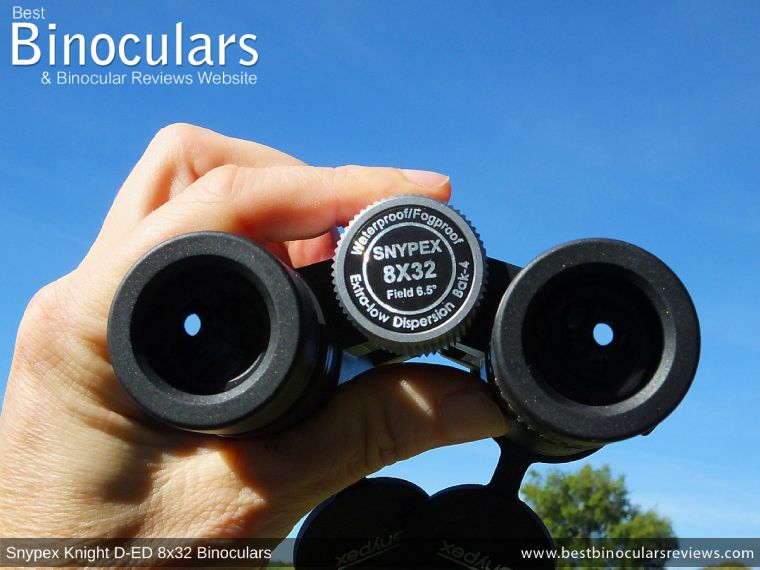
On the Birdforum, someone recently asked a very good question pertaining to 32mm binoculars and rather than just a brief answer, I thought that it was well worth taking a far more detailed look into the following question which I have paraphrased below:
 Question:
Question:
Are 32mm Binoculars all you need?
Whilst out birding at first light when it was still quite dark, I could still see plenty of detail and found it no problem at all to identify birds through my 8x32 Zeiss Victory Binoculars.
Whilst I did not have any other binoculars with larger exit pupils to compare them with at the time, it did make me wonder as to if I needed to spend money on anything else?
I have decided to expand on this question because I experienced something very similar myself not so long ago:
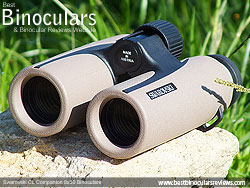 I was out late in the evening testing the even smaller 8x30 Swarovski CL Companion binoculars for my review. With me, I also had a pair of Vanguard Spirit ED 8x42mm binoculars with me to assess them against.
I was out late in the evening testing the even smaller 8x30 Swarovski CL Companion binoculars for my review. With me, I also had a pair of Vanguard Spirit ED 8x42mm binoculars with me to assess them against.
I compared the view through both of them repeatedly, looking at a wide variety of different subjects and in different directions (towards & away from the light) over a long period of time and until way after the sun had set and it had become quite dark.
Before conducting these comparisons, I had expected to be able to quite easily observe a brighter image with the 8x42, which I thought would become more pronounced as it grew darker. But in reality, I really struggled to see any difference in image brightness. At times I did think the Vanguard 8x42s were ever so slightly brighter, but it was in no way conclusive.
Now admittedly the Spirit EDs are not quite in the same league as that of the Swarovski CL Companions, but even so, they are far from poor and have features like ED glass, phase correction coatings and are fully multi-coated with anti-reflection coatings. So I am not criticizing this specific make and model as I am certain that had I used any other bin in their class, the result would have been the same.
Another surprising find was that even when I was looking at other aspects like the colors reproduced, image detail, signs of aberrations and contrast, they were to my eyes still very similar.
Anyway, the point is that even if there was a very small difference, it was very insignificant and really not worth me worrying about. It certainly would not mean the difference between me being able to ID and enjoy watching something like a bird in any way.
So why is this? The theory tells us that the 8x42mm should have at least seemed brighter to me:
8x30 vs 8x32 vs 8x42 Binoculars
Exit Pupil Size
The exit pupil or the diameter of the shaft of light that comes out of the eyepieces on the configurations of these binoculars are:
- 8x30 bins produce an exit pupil that is 3.75mm wide
- 8x32 bins produce an exit pupil that is 4mm wide
- 8x42 bins have an exit pupil that is 5.25mm wide
10x32 vs 10x42 Binoculars
Another popular mid-sized binocular configuration is the 10x32. As you can see below, the higher magnification further reduces the exit pupil diameter and is why these binoculars are largely recommended for use in at least fair light conditions.
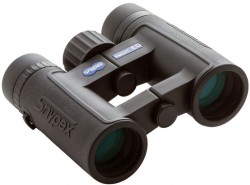 When I was working as a field guide, my 10x32 was one of my favorite choices and a setup that I highly recommend for use on most safari holidays where the light conditions are generally good and the distances to your subjects can at times be fairly great. However as you will read below, the combination of smaller lenses and a fairly high power makes it all the more imperative that you choose a binocular with high-quality optics and coatings. A great example are these Snypex Knight D-ED 10x32 Binoculars.
When I was working as a field guide, my 10x32 was one of my favorite choices and a setup that I highly recommend for use on most safari holidays where the light conditions are generally good and the distances to your subjects can at times be fairly great. However as you will read below, the combination of smaller lenses and a fairly high power makes it all the more imperative that you choose a binocular with high-quality optics and coatings. A great example are these Snypex Knight D-ED 10x32 Binoculars.
The exit pupil or the diameter of the shaft of light that comes out of the eyepieces on the configurations of these binoculars are:
- 10x32 bins produce an exit pupil that is 3.2mm wide
- 10x42 bins have an exit pupil that is 4.2mm wide
So as you can see there is quite a big difference, especially between the 30mm and 42mm binoculars, but what does this mean to us?

Pupil Size
Your iris changes the size of the opening, or pupil in your eye depending on the amount of ambient light available.
Daylight
From what I have been able to establish from research, during the day and it good light, the opening of your pupil will only be about 2 – 4mm wide in diameter.
Thus in these conditions, the “extra” light exiting the wider exit pupils of the eyepieces on the 8x42 and 8x32 binoculars will be wasted as it will be blocked by your iris and not reach your retina. The result being all three sizes of bins will look equal to you in terms of image brightness.
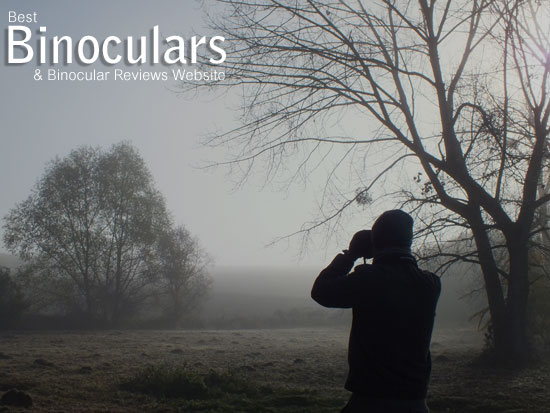
In darkness and very poor light
From my research, I am led to believe that in the maximum diameter that the pupil in the human eye can open to is usually between 5mm and 9mm and is usually about 7mm for adults under 25. This is said to reduce with age.
I have not been able to find out yet how dark it has to be for your eye to open the iris to it’s maximum, but let us assume it is very dark and in complete darkness.
We will take the average of a 7mm maximum to use for this example and you can see that when your iris is at this diameter, the amount of light exiting eyepieces on all three configurations will be a limiting factor. However, as the 8x42 transmits more light through your pupil and onto your retina they should seem brighter to you than the two smaller bins.
For more on, please take a look at my complete guide to the exit pupil.
However, we are assuming that your pupil is at its maximum diameter, which I am not sure it reaches when looking through binoculars at twilight or even in almost complete darkness? However even if it only reaches 5mm, the 8x42 should still seem brighter?
Transmittance
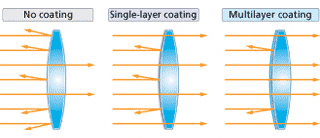 It also assumes that the binoculars have the same transmittance levels – Most quality binoculars use a whole range techniques, galsses and coatings (specifically anti-reflection coatings) to ensure that as much light gets to your eyes as possible.
It also assumes that the binoculars have the same transmittance levels – Most quality binoculars use a whole range techniques, galsses and coatings (specifically anti-reflection coatings) to ensure that as much light gets to your eyes as possible.
These are said to make a big difference to the final image brightness and lower quality bins that use inferior glass and fewer coatings but with the same size objective lenses will deliver less light to your eyes.
So if I had compared exactly the same quality binoculars in my test, would I have noticed that the 42mm was brighter? I am not sure, but I do know that to me, the Swarovski CL was as good in terms of brightness as a mid-high spec 42mm bin.
Conclusion
Are 32mm binoculars all you need?
Well, yes and no! I say this for a number of reasons:
A larger exit pupil has another benefit: When the shaft of light exiting the eyepiece is bigger than the opening in your pupil, it makes it easier to line them both up and so are more forgiving and thus are just that bit easier to use.
I also think that as you reduce the size of the objective lens it becomes increasingly important to make sure you use high-quality binoculars with very high levels of transmittance, this way you are getting as close as possible to the theoretical maximum brightness levels.
Also, keep in mind that there are situations where the larger size of the body and focusing wheel on bins with bigger objectives can be an advantage, for example when wearing thick gloves in winter.
More Info & Further Reading
Other Views
I would also like to mention that on the forum, a number of other people who responded to the question said that they could detect the difference between image brightness between 8x32 and 8x42mm binoculars. However, I am not sure which models they were comparing or what quality they were compared to each other.
Then there is also the possibility of different people’s eyes being more or less sensitive to light. Whilst I don’t know the details and maybe someone could help by commenting below, but perhaps a factor that could explain some of this is an individual’s sensitivity to low light? How would different amounts of rods and cones in your eyes make a difference and do the amounts or how well they work change from person to person?
But leaving the biology behind, in my personal experience, as long as you get yourself a high quality 32mm binocular, I think that for the most part and for most people, the difference between the two is not a million miles apart and so yes, you may only need a 32mm binocular for terrestrial use during the day… and even in twilight.
 Need Some Answers?
Need Some Answers?
Do you have a binocular or optical related question that I have not already covered on this site? Then I would love to try and help answer it for you: Submit Your Question Here

 Article | Posted by Best Binocular Reviews
Article | Posted by Best Binocular Reviews 
 Categories:
Categories:  Tags:
Tags: 

Very informative. Thank you.
You are most welcome and many thanks for the feedback